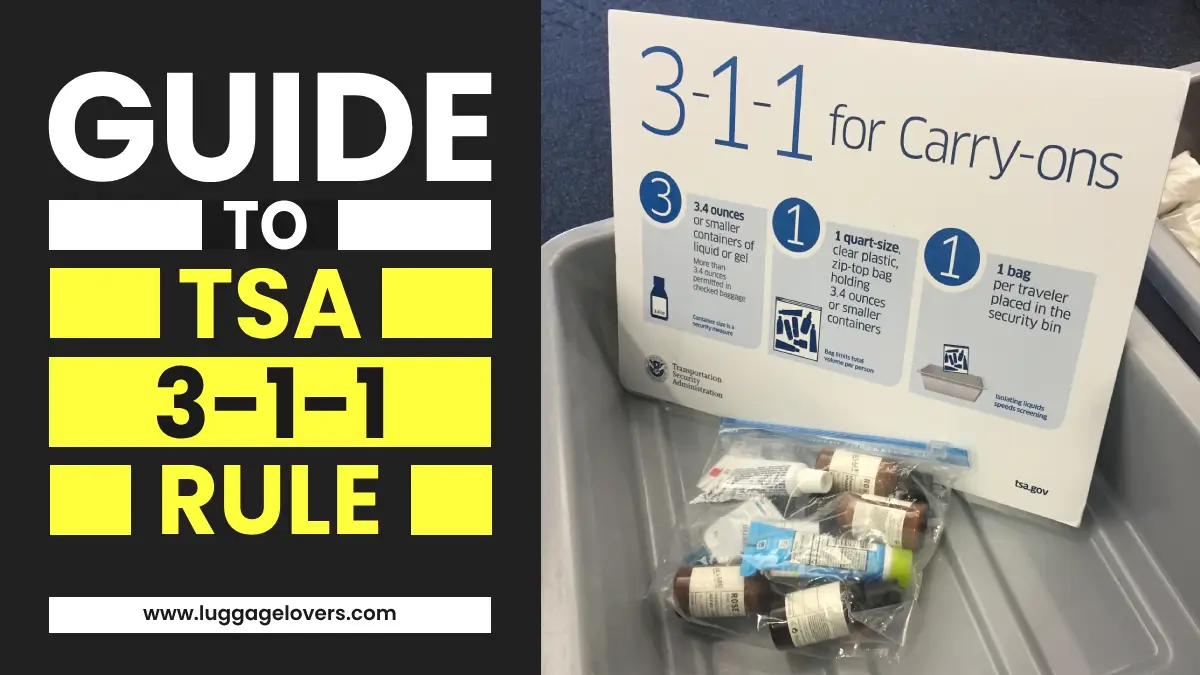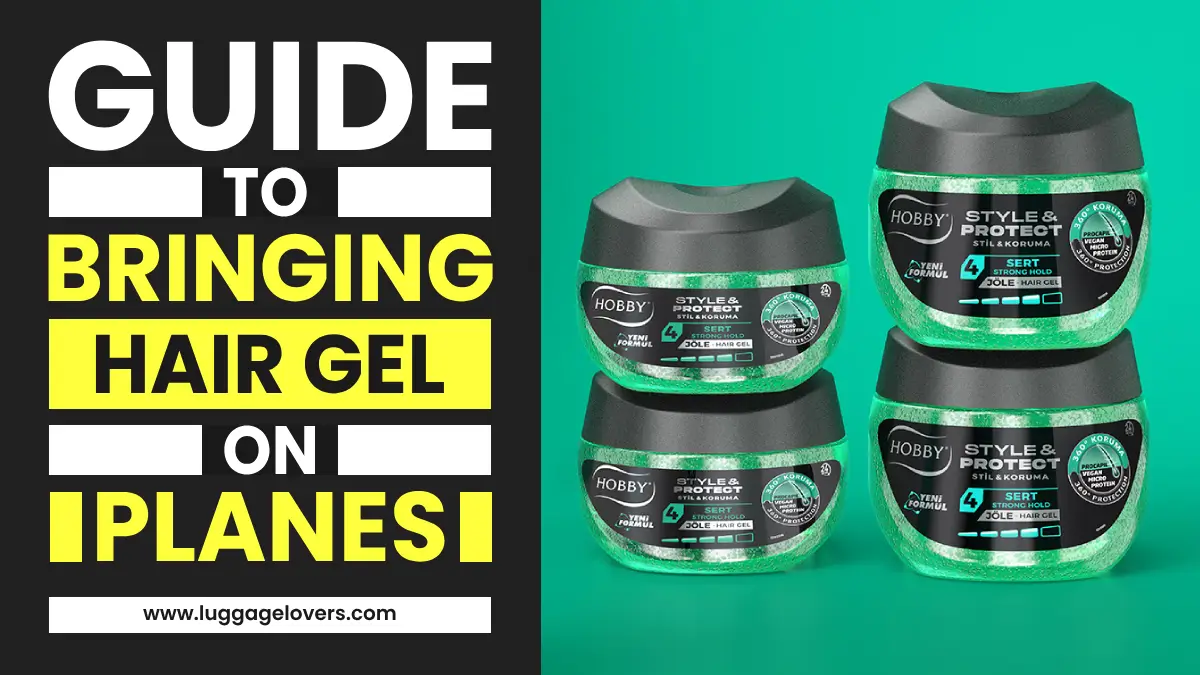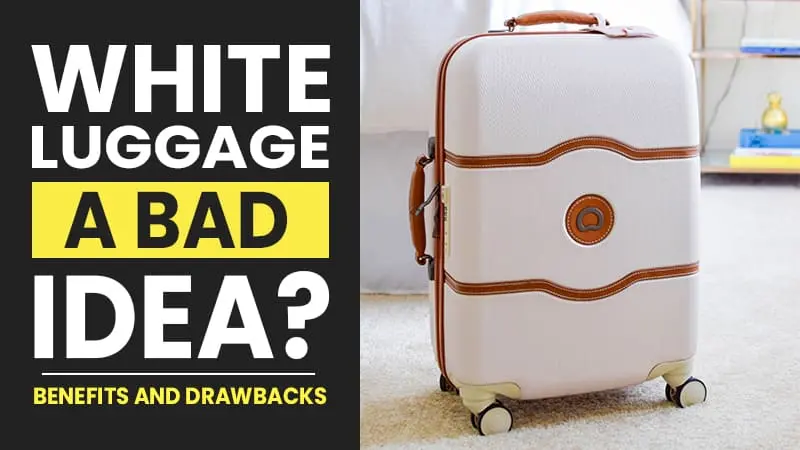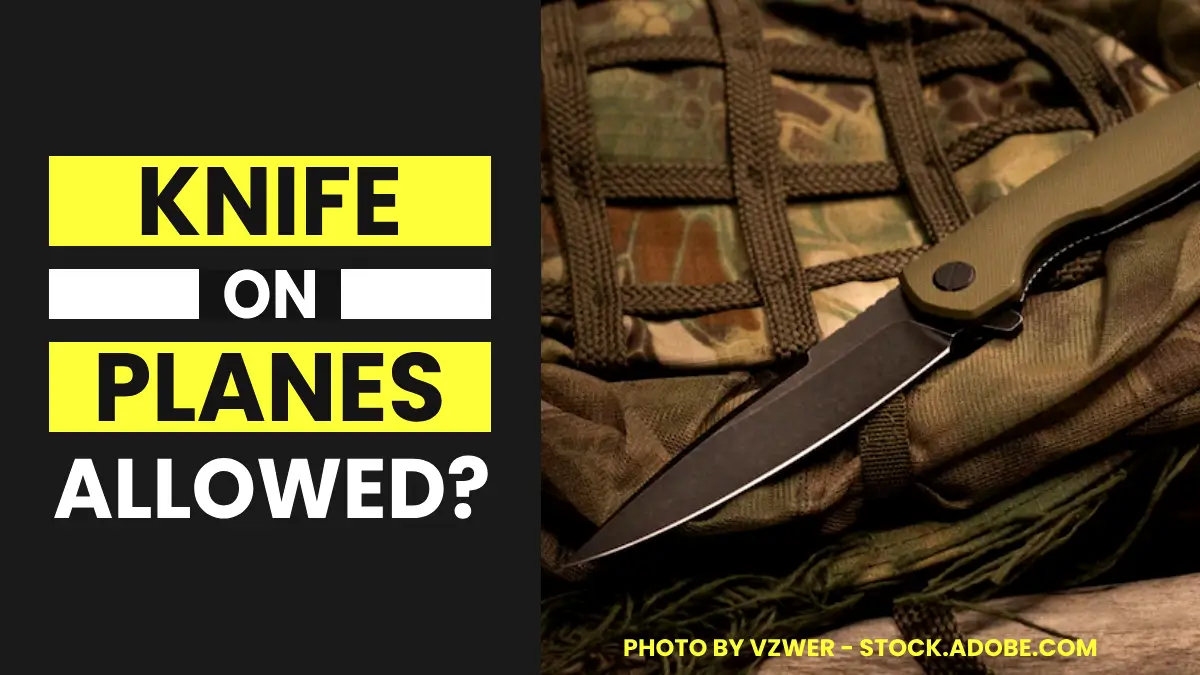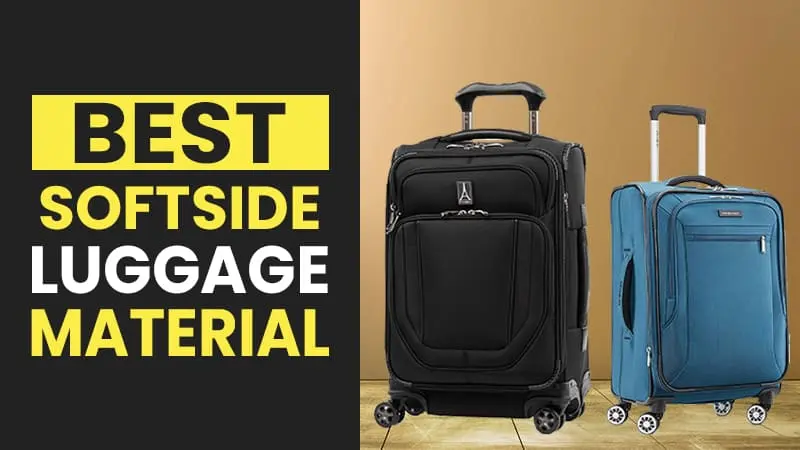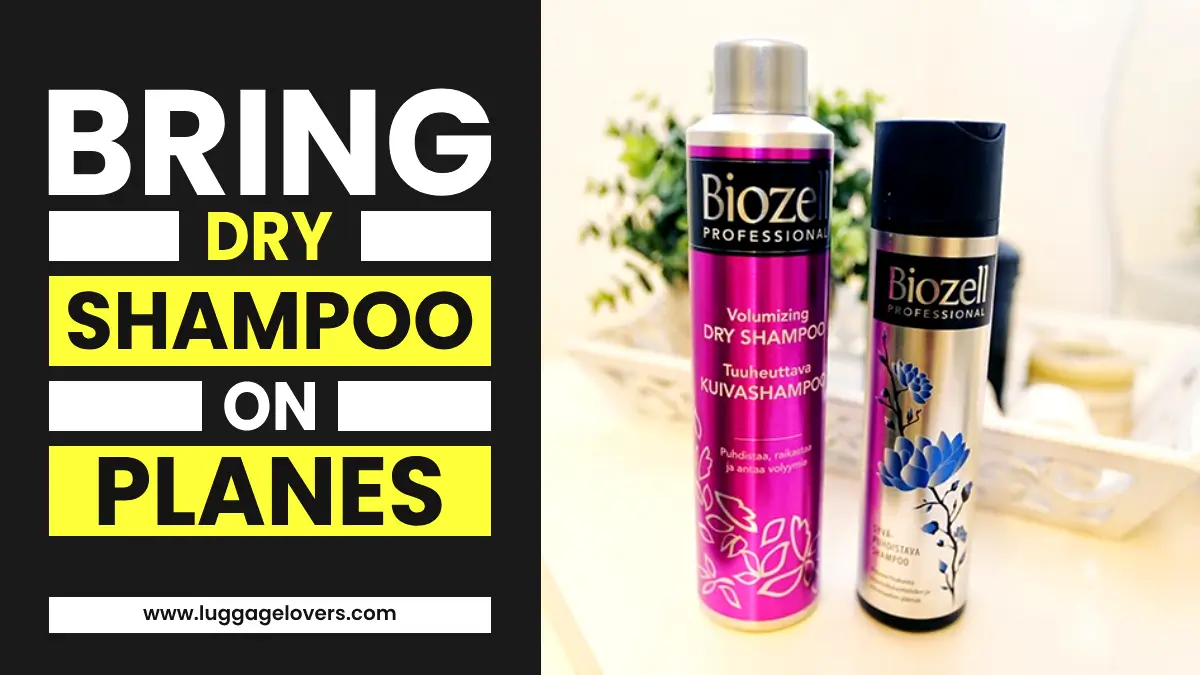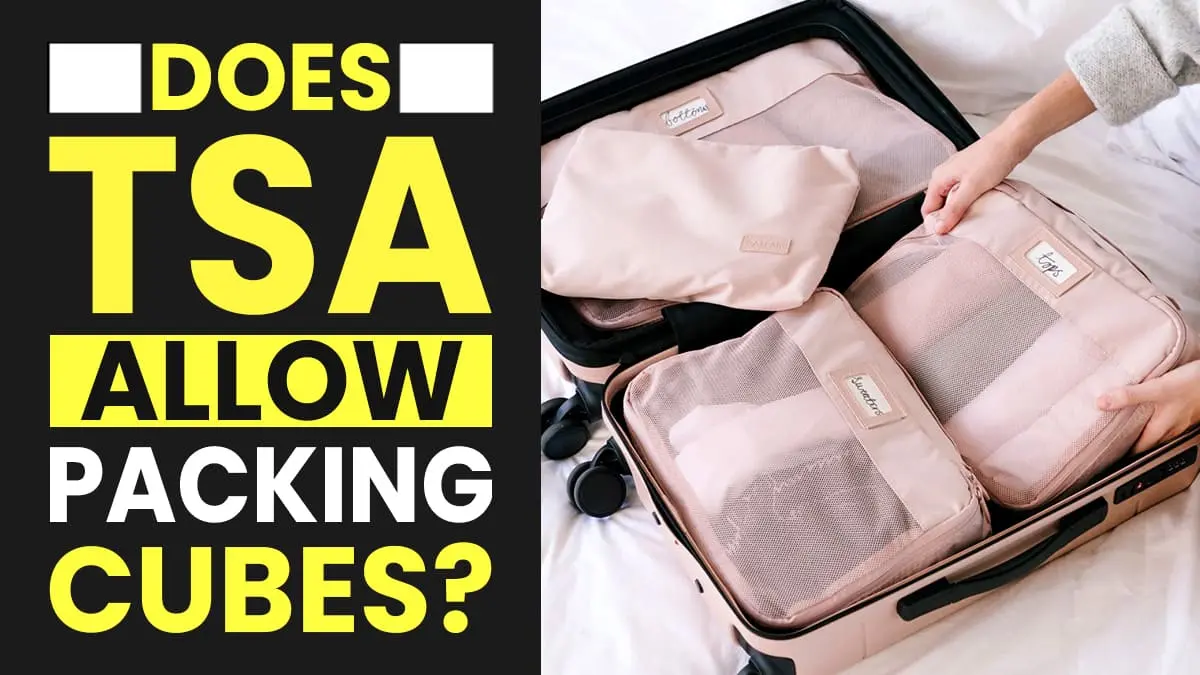Guide to 3-1-1 TSA Rule: Everything You Need to Know
Ever wondered what the 3-1-1 TSA Rule is and why airport security officers care so much about liquids in your luggage or bag? If you’ve ever been puzzled by these three-digit numbers and wondered why your shampoo, gels or other liquid product needs to fit in a small bag, you’re not alone.
In this guide to the 3-1-1 TSA liquid rule, we’ll break down everything about the TSA 3-1-1 rule, including what the TSA 3-1-1 rule is, why it’s called the 3-1-1 rule, why exactly it’s 3.4 ounces or 100 milliliters per container and what are the exceptions to the 3-1-1 TSA rule.
So stay with us to go through the entire guide, as this guide will make everything crystal clear and ultimately help you avoid any mishaps at the security checkpoint and travel stress-free.
What is the TSA 3-1-1 rule?
The TSA 3-1-1 rule, also known as the TSA Liquid Rule, is a set of guidelines that have been introduced by the Transportation Security Administration (TSA). This rule is to regulate the amount of liquids, gels and aerosols that a passenger is allowed to bring on a plane.
This TSA 3-1-1 rule is associated with only carry-on luggage, not checked luggage. The main purpose of this rule is to reduce the risk of liquid explosives. by limiting the quantity of liquid that a passenger can bring in their carry-on luggage.
Now let’s see what exactly the TSA 3-1-1 rule is.
The TSA 3-1-1 rule, basically, means each passenger is allowed to bring liquids, gels and aerosols but in containers, and each container should be either less than or equal to 3.4 ounces or 100 milliliters. These containers should be carried in a one-quart size bag and the bag must be resealable and transparent so that it can be screened easily and quickly.
You can’t carry more than one quart-size bag for carrying your containers because one passenger is allowed only one bag. You can consider it a small and quick travel kit. That’s basically the TSA 3-1-1 rule; you can read it on the TSA official website here.
Note: As TSA says, the container must not exceed 3.4 ounces or 100 milliliters, which means that the container itself must be less than or equal to 3.4 ounces, no matter how much liquid or gel is left inside.
In simple words, you’re not allowed to carry containers exceeding 3.4 ounces or 100 milliliters that contain liquids or gels measuring less than 3.4 ounces or 100 milliliters.
Also read: Can You Bring a Knife on Plane?
Why is it called the 3-1-1 TSA rule?
There is basically a reason why the rule is called the 3-1-1 rule. Every digit in 3-1-1 has a significant meaning so let’s break it down to make it clear and easy to understand.
Breakdown of the 3-1-1 TSA Rule
- 3 means: Passengers are allowed to bring liquids, gels and aerosols in containers that must not exceed 3.4 ounces or 100 milliliters.
- 1 means: All containers of liquids, gels and aerosols must be in a small, quart-sized bag that must be transparent and resealable to make the screening process convenient and quick.
- 1 means: Each passenger is allowed to carry only one quart-size bag through the security checkpoint.
This is what 3-1-1 actually means.
Why exactly 3.4 ounces or 100 milliliters per container?
You might be wondering why exactly the limit is 3.4 ounces or 100 milliliters; it could be more or less than this specific amount. Let’s dive into it.
Well, there are many reasons behind this specific limit. Let’s take a look at a few of them.
The limitation is based on the scientific assessments that ensure that this quantity is safe for travel and can’t be used for harmful purposes. The 3.4-ounce limit is a convenient measurement for both passengers and security personnel to understand and follow consistently.
This limit easily aligns with the common packaging size of personal care products and is an accurate balance between allowing passengers to bring their essential items while still maintaining the security of air travel.
Also read: Can You Bring Nail Clippers on a Plane?
Exceptions to the 3-1-1 TSA Rule?
Traveling means packing and you can’t be a smart packer unless you know the TSA rules and the exceptions so that you can take full advantage of them. Now that you know that all liquid must be under 3.4 ounces, it’s also important to know what the exceptions are that don’t fall under the TSA 3-1-1 rule.
Those items that are related to health and child care come under the category of exception, which means items like medication, baby care products and breast milk are exempt from the TSA 3-1-1 liquid limit.
So let’s take a closer look at each exemption:
Medication
If you’re someone who regularly needs medicine, this is great news for you. You can travel with your medication in liquid form along with its prescription, and you won’t have to worry about the TSA 3-1-1 rule.
But the thing to keep in mind is that your medicines should be easy to understand and you should inform the TSA security officers about these medications at the time of the screening process to avoid any mishaps. It’s also recommended that you take a copy of your doctor’s prescription with you.
Baby Formula and Breast Milk
There is good news for parents traveling with their infants or young children because baby formula, breast milk and baby foods come under exception to the 3-1-1 TSA rule to ensure the needs of your little ones throughout the entire journey.
Unlike other liquids, parents are allowed to bring and carry quantities of baby formula, breast milk and baby food even if they exceed the limit of 3.4 ounces.
But the thing to keep in mind is that, when going through the security checkpoint, it’s essential to inform the security officers about these items. Security officers might need to screen them additionally to verify the content.
It’s recommended for parents to store these items in such a way that they’re easily accessible to make the screeching process easier and quicker.
Liquids for Special Dietary Needs
If you’re someone who needs liquids or gels for specific medical conditions, the good news is that the TSA provides exemptions to the 3-1-1 rule for liquids needed for specific medical conditions. These exemptions include liquid medication and other dietary supplements like juice and shakes.
These things are also allowed under the same guidelines that we explained above in the medication section so they require additional screening at security checkpoints.
If you want to read about the exemptions yourself, you can go to the source here.
Also read: Can You Bring Scissors on a Plane in Carry-On or Checked Luggage?
What items are considered “liquids” under the 3-1-1 TSA rule?
The word “liquids” with regard to the TSA 3-1-1 rule includes not only traditional liquids but also aerosols, gels, paste and creams. We’re giving you a list of examples of products that are considered liquids under the 3-1-1 rule.
- Shampoo and conditioner
- Deodorants
- Lotion
- toothpaste
- Liquid foundation
- Shower gel
- Perfume
- Hair gel
- Luquid soap
- lip gloss
There are many other products that also come under the 3-1-1 TSA rule. For any other product that you’re confused about, you can visit the relevant official website or just carry it in your checked luggage.
What about larger containers of liquids? Can you bring them in checked luggage?
Yes, you can bring larger liquid containers in your checked luggage without thinking of the 3-1-1 restrictions because the TSA 3-1-1 rule is only applicable for the items you pack in your carry-on luggage, not checked luggage.
But to get the most updated information, it’s highly recommended that you check the official website of the airline you want to fly with and read the guidelines provided by the relevant aviation authorities so that you can avoid any mishaps at security checkpoints.
What About the Other Products?
There are hundreds of products that we need to pack in our carry-on and checked luggage. Checking the rules for each product is really a big hassle. But don’t worry at all; we’ve done everything for you here. We’re providing you with a guide for other products.
You can save this page because I’ll be updating it with other use guides with regards to what you can bring on planes.
Here is the list of our other product guides:
- Can You Bring Dry Shampoo on a Plane?
- What size deodorant can you take on a plane?
- Can You Bring Hair Gel on a Plane?
- Can You Bring Nail Clippers on a Plane?
- Can You Bring Scissors on a Plane?
- Can You Bring a Knife on Plane?
- Can You Bring Laptop in Checked Luggage?
- Are Luggage Covers Allowed By TSA?
- Can You Bring Umbrella on a Plane?
Concluding Words
You’re allowed to bring liquids, gels and aerosols in your carry-on luggage, but with the condition that each container must not exceed 3.4 ounces, or 100 milliliters. Furthermore, all the containers should be kept in one quart-size bag that must be resealable and transpaten so that the screening process becomes easier and simpler.
Yes, there are a few exceptions and relaxations that you can enjoy. This exemption is about medication, baby essentials and breast milk, which we’ve explained in detail above.
We hope this guide has answered your questions. If you still have any questions or suggestions, do let us know in the comment section below. We’d be more than happy to assist you.
Thanks for reading.
Frequently Asked Questions about TSA 3-1-1 Liquid Rule
What exactly is the TSA 3-1-1 liquid rule?
The 3-1-1 rule is basically a guideline for carrying liquids, gels and aerosols in your carry-on luggage. That means each passenger can bring liquids, gels and aerosols in 3.4-ounce containers within one quart-size bag.
Can I bring opened containers of liquids in my carry-on?
Yes, you can bring opened containers of liquids but they must still follow the TSA 3-1-1 rule. They must be properly sealed and placed in a quart-size bag that must be transparent and resealable.
Can I bring frozen liquids through security checkpoints?
Yes, you can generally bring frozen liquids. If the liquid is frozen solid at the time of the security check, they’re usually allowed.
How strictly is the 3-1-1 rule enforced at airports?
The 3-1-1 is generally enforced strictly. However, this enforcement may vary from airport to airport, but it’s recommended to follow the guidelines to avoid any inconvenience at the airport.

